GNU/Linux Fedora 35 Installing Genymotion – Step by step Guide
[xyz-ihs snippet=”as-336-1″]How to Download and Install Genymotion desktop on Fedora 35 GNU/Linux – Step by step Tutorial.
And Genymotion for Fedora 35 is an Android emulator which includes a Complete Set of Sensors and Features in order to interact with a Virtual Android Environment.
Especially relevant: Genymotion is Free for Personal Use and do Not Require any License Key.
Here are some Key Features of Genymotion:
- Android Virtual Devices (AVDs): Genymotion allows users to create and run Android Virtual Devices (AVDs) on their desktop computers. These virtual devices emulate the hardware and software characteristics of real Android devices, including different screen sizes, CPU architectures, Android versions, and device configurations.
- High Performance: Genymotion is known for its high-performance emulation capabilities, providing fast and responsive Android virtual devices. It leverages hardware acceleration features such as OpenGL and hardware virtualization (Intel HAXM or AMD-V) to optimize performance and ensure smooth operation of Android applications.
- Wide Range of Device Configurations: Genymotion offers a wide range of pre-configured virtual devices with different specifications, allowing users to test their Android applications on various device configurations. This includes different screen resolutions, RAM sizes, CPU types, and Android versions, helping developers ensure compatibility and optimize their apps for different target devices.
- Integration with Development Tools: Genymotion integrates seamlessly with popular development tools such as Android Studio, Eclipse, and IntelliJ IDEA. Developers can easily deploy and test their Android applications on Genymotion virtual devices directly from their preferred development environment.
- Advanced Features: Genymotion offers advanced features and capabilities for Android app testing and development, including support for GPS simulation, accelerometer and gyroscope sensor emulation, camera emulation, network latency simulation, and more. These features help developers thoroughly test their apps under various conditions and scenarios.
- Cloud-based Testing: Genymotion Cloud is a cloud-based version of Genymotion that allows users to access and test Android virtual devices on remote servers. This enables distributed testing across different devices and platforms, as well as scalability for large-scale testing scenarios.
- Support for Android Debug Bridge (ADB): Genymotion provides seamless integration with the Android Debug Bridge (ADB), allowing developers to interact with virtual devices using ADB commands for debugging, installing, and managing applications.
- Cross-Platform Compatibility: Genymotion is available for multiple desktop platforms, including Windows, macOS, and Linux, making it accessible to a wide range of developers and testers regardless of their operating system preferences.
Finally, this guide includes detailed instructions on Getting Started with Genymotion on Fedora.

1. Launching Terminal
Open a Terminal window
(Press “Enter” to Execute Commands)In case first see: Terminal Quick Start Guide.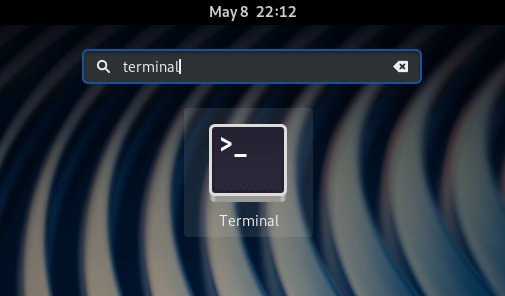
2. Installing Dependencies
Now Install Oracle VirtualBox
Simply play:sudo apt install virtualbox
3. Downloading Genymotion
Download Genymotion for Fedora GNU/Linux
Possibly, on Firefox Prompt Choose “Save File”:There follow also instructions on How to Register a desktop Account.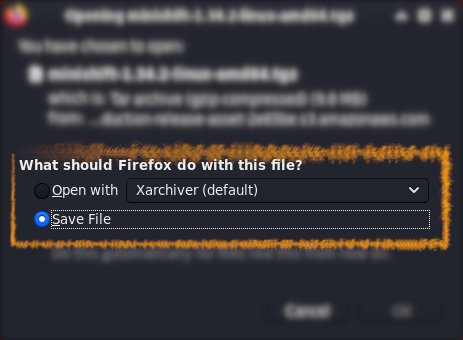
4. Installing Genymotion
Then to Set up Genymotion on Fedora
First, Access the Target, usually in the Downloads folder:cd && cd Downloads
To Check that there is run:ls . | grep genymotion
The grep Command Refine the output List showing only the entries Matching the Keyword.
(But if you are in Trouble to Find Out it on Terminal See: How to Access Downloads Folder from Browser)
Give Execution Permission with:chmod +x ./genymotion*.bin
And then to Setup Genymotion:sudo ./genymotion*.bin
Finally, possibly to modify the PATH use:echo "export PATH=$PATH:/opt/genymobile/genymotion" >> ~/.bashrc
Amend the above Command in case of a Custom Location.
To reload it:bash
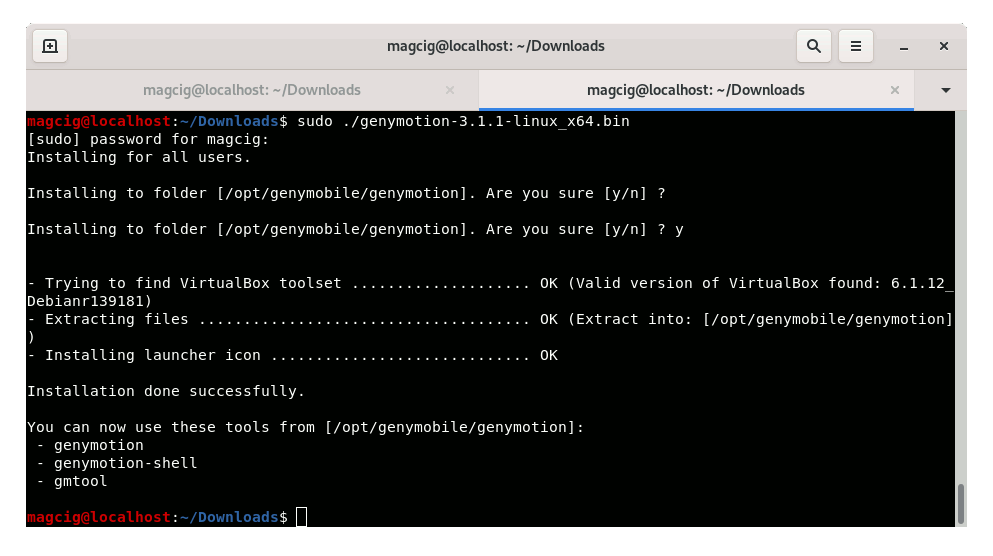
5. Launching Genymotion
Finally, Launch & Enjoy Genymotion From Shell simply with:
genymotion
Or better, make Use of the desktop Launcher:Furthermore, you dispose also of
genymotion-shell
And:gmtool
During the first Start you are Prompted about the Installation Type.
First, enter you Credentials of Register for an Account:Now Choose the Persolan Use or to Enter a License Key: Next Agree to the License:
Next Agree to the License: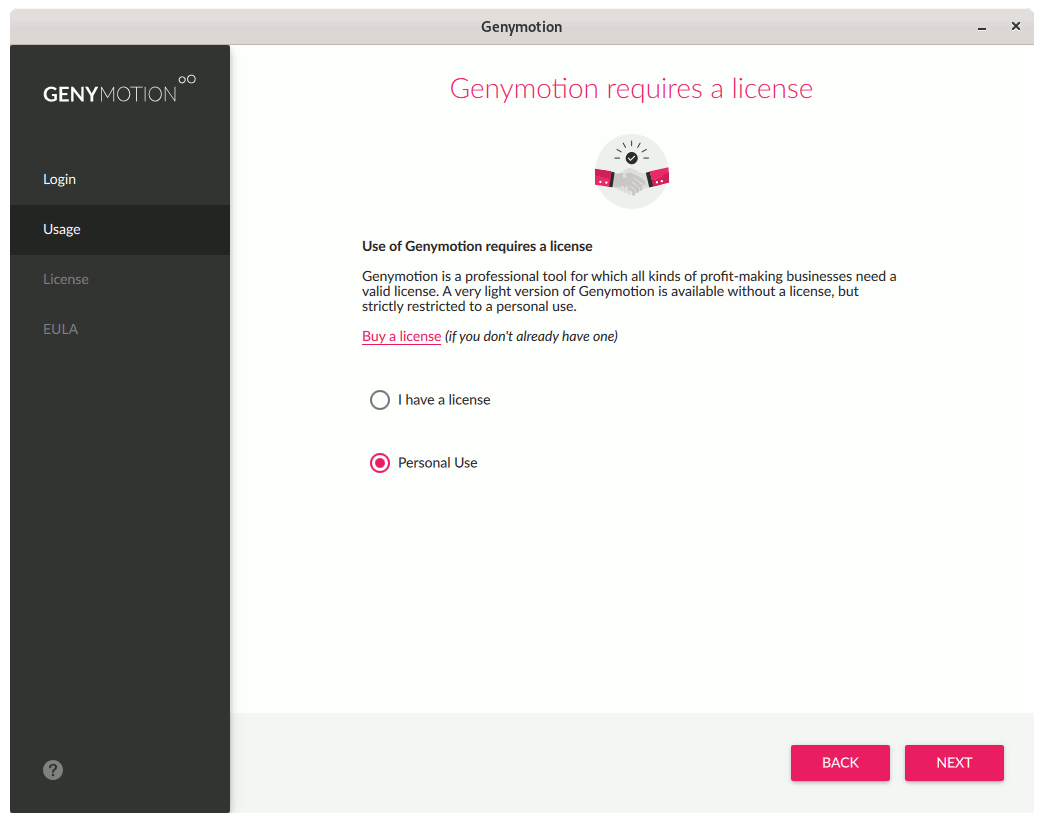 Finally, Enjoy Genymotion on Fedora:
Finally, Enjoy Genymotion on Fedora: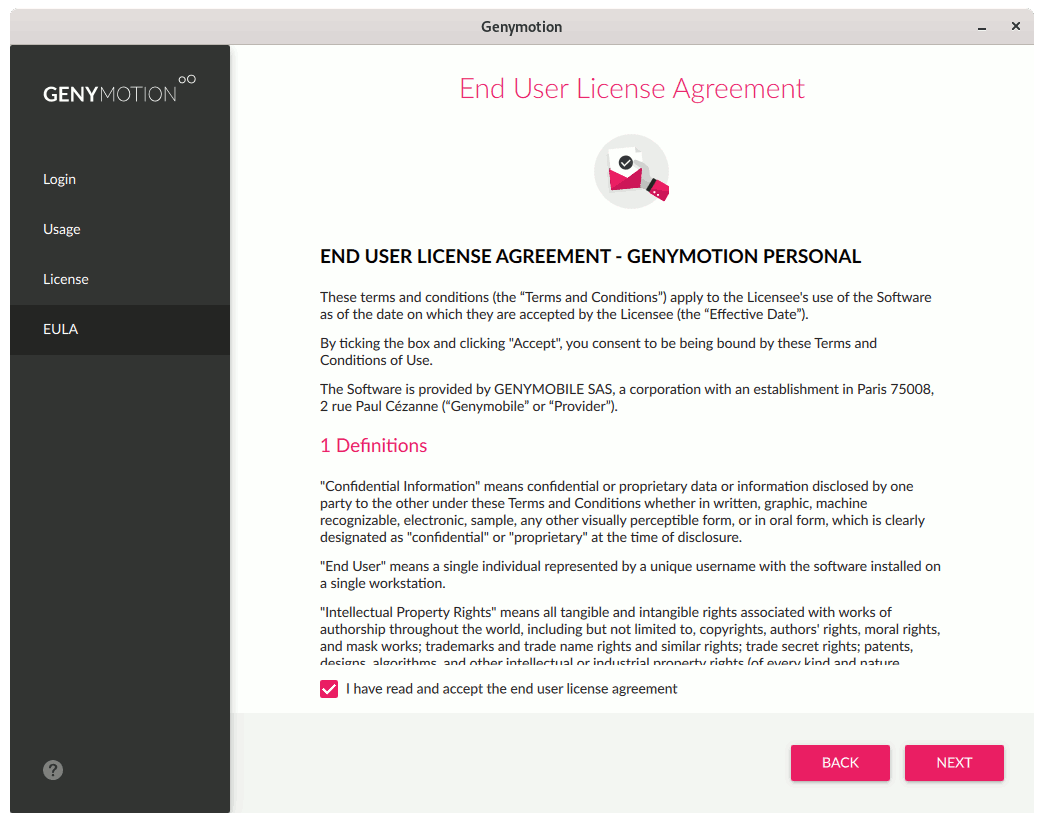
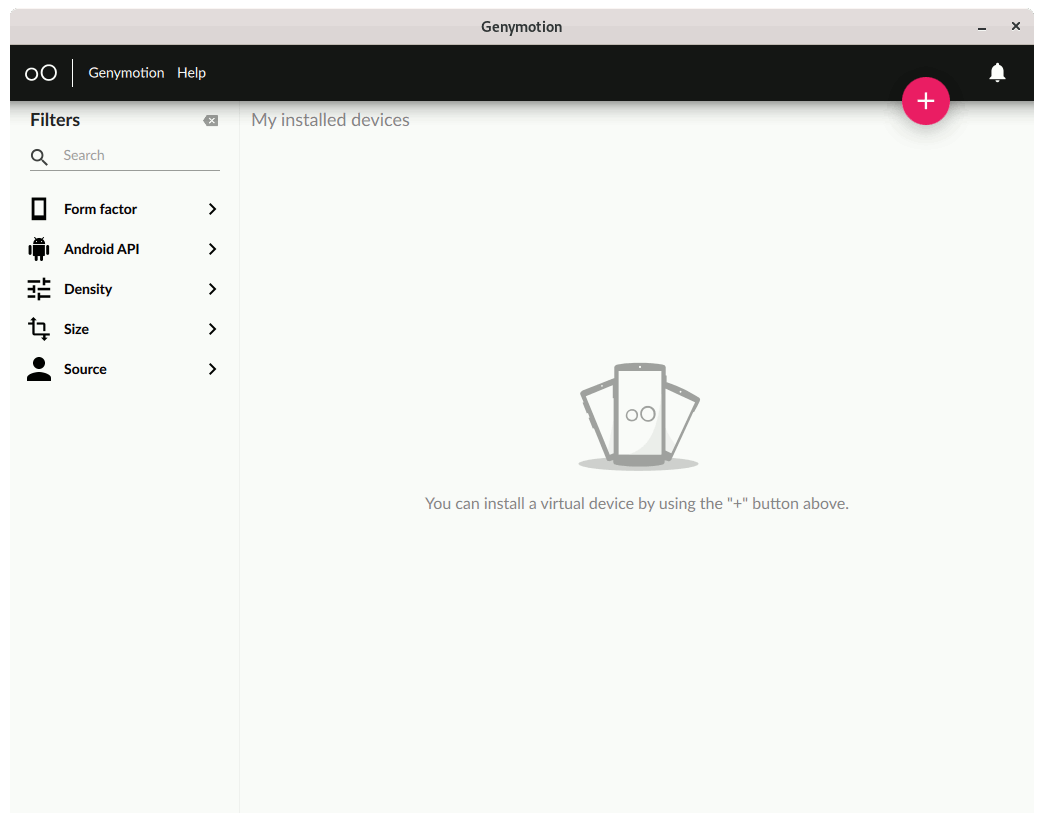
6. Genymotion Getting Started Guide
Getting Started with Genymotion for Fedora GNU/Linux

So Now I’m truly Happy if My Guide could Help you to Quick Start with Genymotion on Fedora 35!